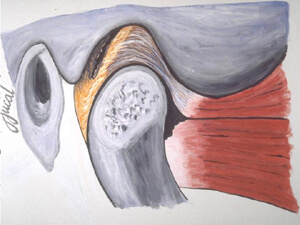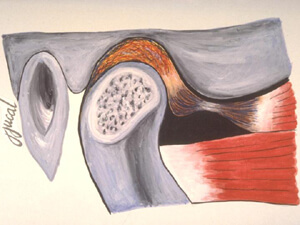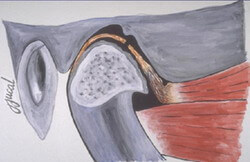
Clicking or Grinding Sounds in the Jaw Joints
A normal, healthy Temporo Mandibular (TM) joint is quiet during function. The jaw movements are smooth without any pulling to one side (called Deviation) or abrupt changes in speed and direction (called Deflections).
The glenoid fossa (the socket, which is part of the Temporal bone that also houses the ear hole, hearing mechanism and the balancing organ) is connected to the condyle (the rounded head of the Mandible that articulates with the fossa) by ligaments that bind the two bones together.

If there is chronic compression from a misaligned bite or trauma to the discal ligament that leads to a tear, then the disc would slip out from between the two bones. The dislocation is usually to the anterior. As the jaw opens, the tether holding the disc pulls it back on top of the condyle leading to a clicking or popping noise.

As the bite deepens, the disc will not return to its position on top of the condyle. This means that the soft retro-discal tissue with blood supply is between the two bones. This can lead to inflammation and pain in the joint. Eventually the tissue becomes perforated and the blood supply is cut off. The bones are then in constant contact. The joint surfaces eventually get rough leading to a grinding noise. This leads to destruction of the bony surfaces (arthritis).

